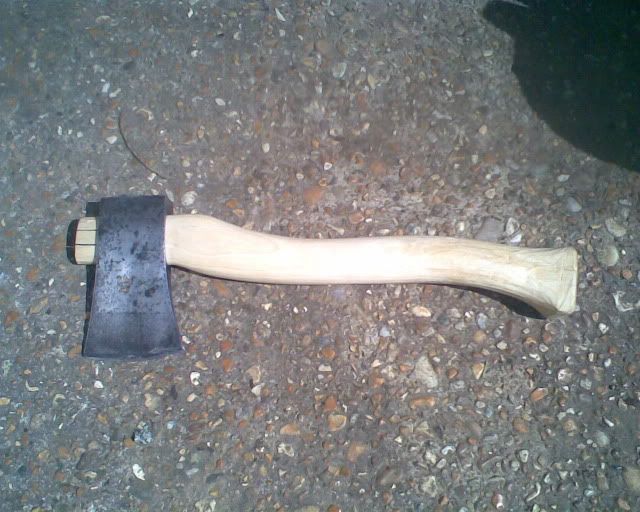hi there,
i almost finished fixing up an axe for a friend and was at the stage of fitting the head and thought i'd be better off reworking the blade first. i tried to use a file (brand new sandvik mill b*stard) and it just skipped over it like it was made of glass! no chance.
no chance.
i wish i had tried this earlier! then i wouldn't have bothered fixing it but iv put too much work into it to abandon it now.

could i re-temper the edge a little softer? iv seen on greenpete's video when he tempers his knives by heating them with a blow torch until they turn a straw yellow colour. would it be easily done with an axe too?
many thanks!
Pete
i almost finished fixing up an axe for a friend and was at the stage of fitting the head and thought i'd be better off reworking the blade first. i tried to use a file (brand new sandvik mill b*stard) and it just skipped over it like it was made of glass!
i wish i had tried this earlier! then i wouldn't have bothered fixing it but iv put too much work into it to abandon it now.

could i re-temper the edge a little softer? iv seen on greenpete's video when he tempers his knives by heating them with a blow torch until they turn a straw yellow colour. would it be easily done with an axe too?
many thanks!
Pete
